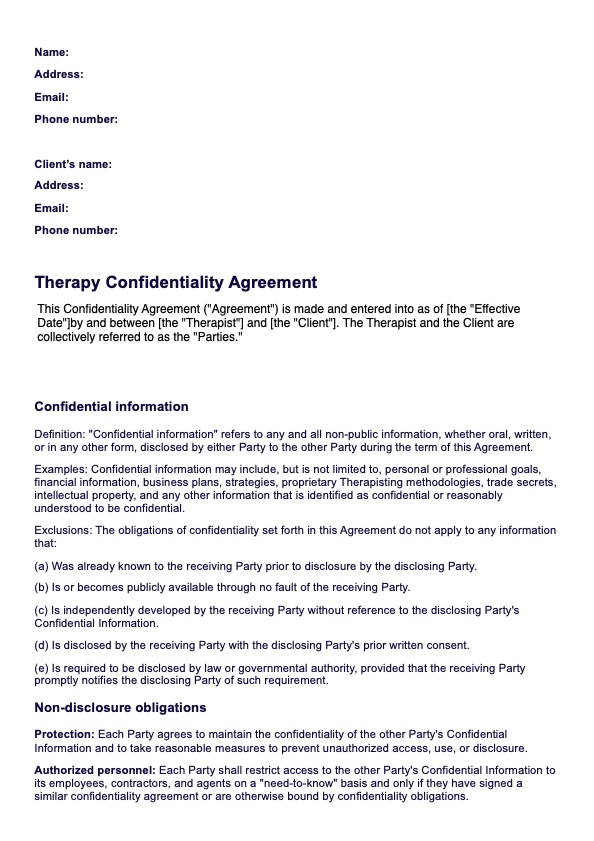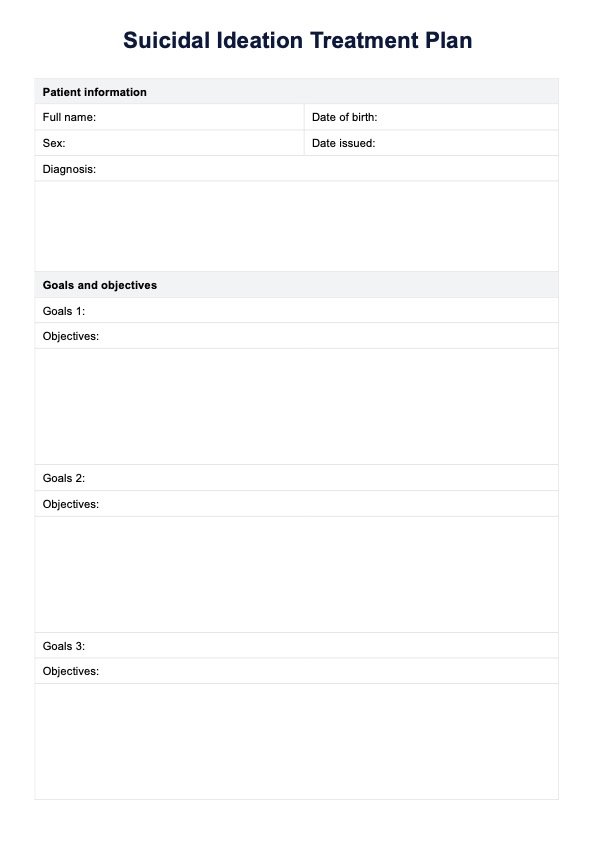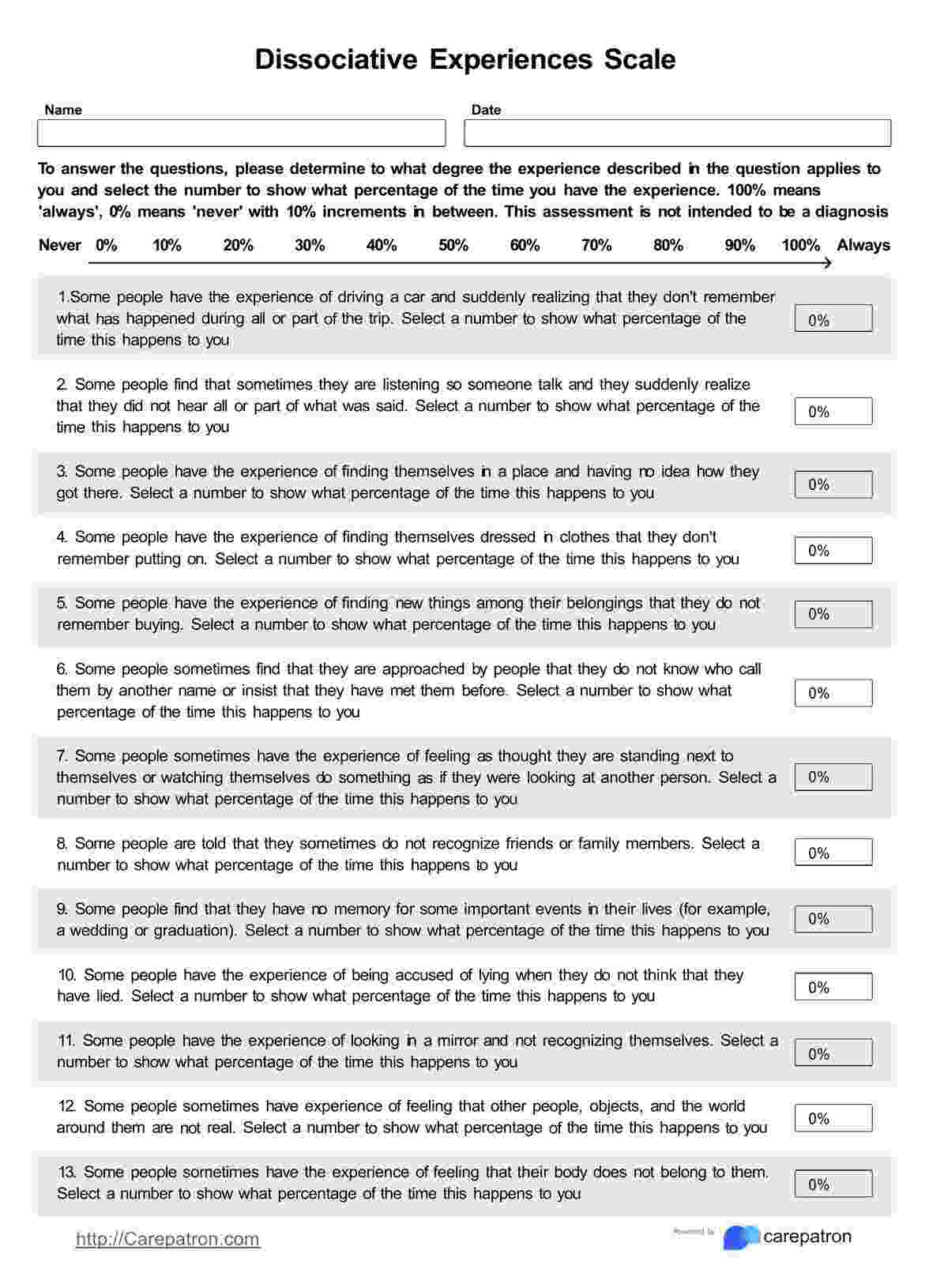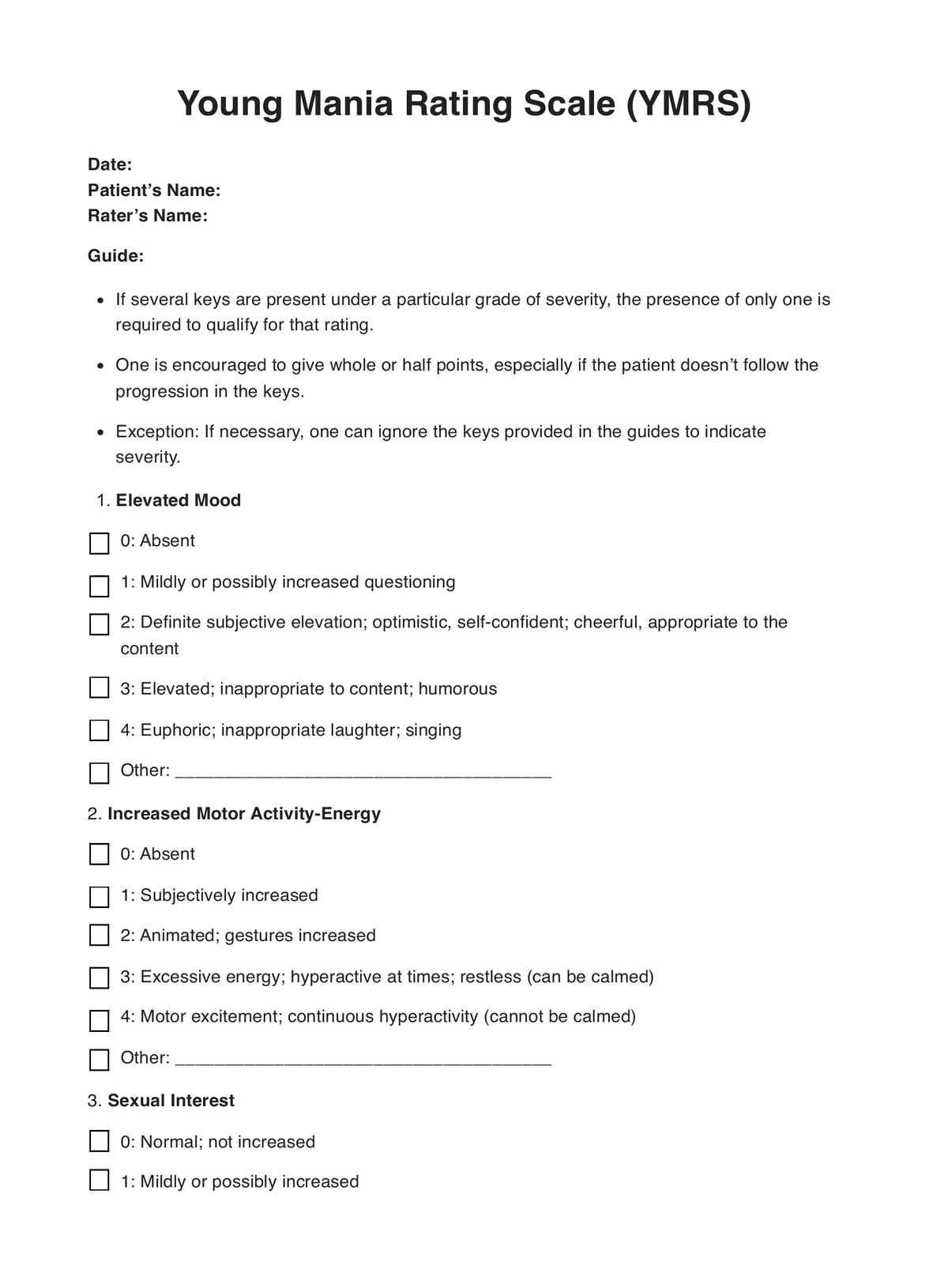Distraction as Distress Tolerance DBT Worksheet
Cope with distress through effective techniques with the Distraction as Distress Tolerance DBT Worksheet. Download a free PDF and embark on your journey.


What is Dialectical Behavior Therapy?
Dialectical Behavioral Therapy (DBT) is a type of cognitive-behavioral therapy developed by Dr. Marsha M. Linehan to help individuals struggling with emotional dysregulation, intense emotional experiences, and difficulties in interpersonal relationships. 'Dialectical' refers to comprehending how two seemingly contradictory things could hold truth simultaneously. For instance, embracing oneself while altering behavior might appear conflicting. However, DBT emphasizes that achieving both of these objectives concurrently is feasible.
The primary objective of is to facilitate individuals in understanding and embracing complex emotions, acquiring effective strategies for managing them, and cultivating the capacity to instigate constructive transformations in their lives. DBT integrates cognitive-behavioral strategies with mindfulness practices, and it is especially useful for those who are distressed and have difficulty managing their emotions.
Distress tolerance is one of the core modules of DBT, which focuses on helping individuals develop healthier ways to cope with and tolerate distressing situations and emotions without resorting to maladaptive behaviors. People who struggle with emotional regulation often feel overwhelmed by intense emotions and may turn to harmful behaviors, such as self-harm, substance abuse, or impulsive actions, to alleviate their emotional pain. Distress tolerance helps by providing better alternatives for managing distress without resorting to these destructive behaviors.
Distraction is one of the key techniques employed in distress tolerance. It involves diverting attention from overwhelming emotions or distressing events by absorbing activities or focusing on the current moment. This assists individuals in properly managing discomfort and avoiding impulsive behaviors.
DBT's distress tolerance module equips individuals with skills to manage distressing situations and emotions in healthier ways. By employing techniques like distraction, individuals can gradually improve their ability to cope with distress and diminish the desire to engage in harmful behaviors.
Distraction as Distress Tolerance DBT Worksheet Template
Distraction as Distress Tolerance DBT Worksheet Example
How to use the Distraction as Distress Tolerance DBT Worksheet?
Making rational decisions when overwhelmed by intense emotions is difficult. Distraction as Distress Tolerance DBT Worksheet is used as a guide to cope with these situations. Here are steps on how to effectively use this tool:
1. Familiarize
Download a copy of the Distraction as Distress Tolerance DBT worksheet from the Carepatron website. Familiarize yourself with the purpose, instructions, and structure of the worksheet.
2. Identify the triggers and the ways you respond to them.
Recall triggering situations or emotions—times of overwhelm, anxiety, anger, or sadness. Note your responses, both healthy and unhealthy.
3. Plan ahead
The worksheet may provide a list of distraction techniques. These activities could include reading, coloring, problem-solving, walking, or listening to music. Choose the one that resonates with you.
4. Implement
When you are faced with a distressing situation, employ the technique that you planned. Focus your attention on the activity, allowing it to divert your mind from distressing thoughts or emotions.
5. Document
Document all the triggers you have experienced and the techniques you have employed to distract yourself from them. Write them in the space provided in the worksheet.
6. Reflect
Reflect on your experiences. Evaluate the effects of the techniques. Recognize the techniques that worked best. Identify what was difficult about distracting yourself when in a distressing situation. Describe a challenging situation where using distraction would have been helpful for you. Recognize your support system.
7. Complete the form
Complete the worksheet by writing your reflections on the worksheet in the space provided. Make sure to give yourself enough time to think about your answers.
DBT includes assignments therapists assign, like the Distraction as Distress Tolerance DBT Worksheet. It is a client-involved therapy emphasizing active participation. Completing this assignment proves the client's commitment to the therapeutic process.
When would you use this Distraction as Distress Tolerance DBT Worksheet?
Both individuals and mental health professionals can employ Distraction as Distress Tolerance DBT worksheets for personal and clinical purposes. Below are key scenarios where this resource proves advantageous:
Individuals facing difficult situations, such as high-stress jobs or demanding personal lives, can utilize this tool to learn and practice techniques that help them effectively manage stress and overwhelming emotions.
- Anxiety and Panic Attack
Individuals suffering from anxiety or panic attacks can use the worksheet to shift their attention away from troubling thoughts and sensations. The sensory-focused activities in the worksheet can help with grounding and calming during stressful situations.
- Individual and Group Therapy Sessions
Mental health practitioners can utilize this tool during one-on-one and group sessions to teach clients how to apply distraction techniques in real-life situations. This helps clients build practical skills to manage distress independently, enhancing their emotional regulation abilities.
Practitioners can integrate the worksheet to guide discussions, share successes, and explore distraction techniques collaboratively during group therapy. This cultivates a supportive atmosphere where participants learn from each other, enhancing collective skill growth.
- Crisis Intervention
In moments of heightened distress or crisis, practitioners can quickly introduce the worksheet to clients, guiding them through immediate strategies for redirecting their focus and coping with intense emotions. This tool can be particularly effective in preventing impulsive actions or reactions.
In these critical scenarios, the Distraction as Distress Tolerance DBT Worksheet serves as a guide, offering tools to manage distress and cultivate emotional stability.
What are the benefits of using this Distraction as Distress Tolerance DBT Worksheet?
Free Distraction as Distress Tolerance DBT Worksheet provides numerous significant benefits, contributing to enhanced emotional well-being and improved coping strategies. Here are some of the key benefits of using this tool.
Tailored Approach
Individuals can choose distraction strategies that correspond to their preferences and levels of comfort. This personalized approach ensures that distress tolerance tactics are effective and manageable.
Heightened Emotional Resilience
Individuals gradually acquire stronger emotional resilience by using the skills suggested in the worksheet, allowing them to negotiate adversities with increased composure.
Effective Distress Relief
The worksheet presents verified distraction techniques, skillfully guiding users to redirect their focus from distressing emotions. These techniques offer effective relief by steering attention away from emotional turmoil and fostering a sense of calm.
Mitigated Impulsivity
The worksheet instructs healthy distress-coping methods, curbing impulsive responses that could result in remorseful actions or choices. It contributes to greater self-control and better decision-making by providing alternative ways to manage distressing situations.
Mindful Presence
The worksheet fosters mindfulness through sensory involvement, helping users remain anchored in the present moment. This approach curbs the escalation of distress, as heightened awareness of sensory experiences counteracts the overwhelming nature of distressing emotions.
The Distraction as Distress Tolerance DBT Worksheet into one's life provides individuals with a comprehensive set of tools for effectively managing distress, cultivating mindfulness, and building a resilient foundation for navigating life's emotional obstacles. This resource is a cornerstone for establishing improved emotional regulation, self-awareness, and adapting to stressors adaptively.
Strengthened Support Network
The worksheet prompts users to reflect on their support systems, fostering an awareness of the role friends, family, or professionals play in their journey toward emotional well-being. This acknowledgment encourages seeking help when needed.
Commonly asked questions
The time it takes to complete the Distraction as Distress Tolerance DBT Worksheet depends on the individual's pace, engagement, and knowledge of the procedures. On average, it may take 20 to 30 minutes to engage with the worksheet's exercises and reflections properly.
The Distraction as Distress Tolerance DBT Worksheet empowers individuals to manage distress effectively. Teaching practical techniques and encouraging mindfulness assists in redirecting attention from overwhelming emotions. This promotes emotional regulation, reduces impulsive reactions, and equips individuals with tools to navigate challenging situations with resilience and composure.
The Distraction as Distress Tolerance DBT Worksheet is best used in moments of distress, anxiety, or emotional overwhelm. It is a valuable resource during high-stress situations when facing triggers, combating impulsive reactions, managing anxiety or panic, and seeking alternatives to harmful behaviors. It aids in cultivating healthier coping strategies.


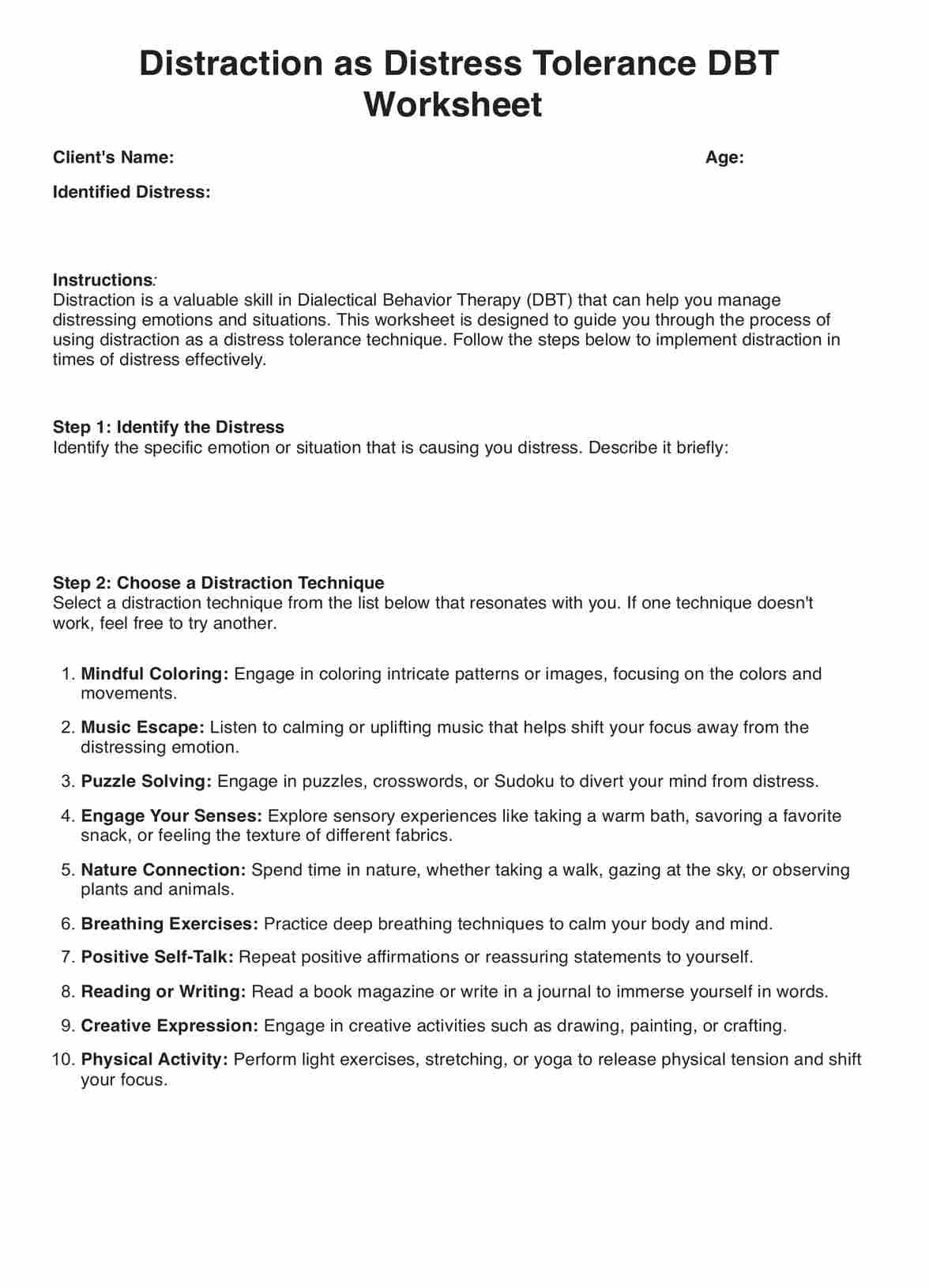
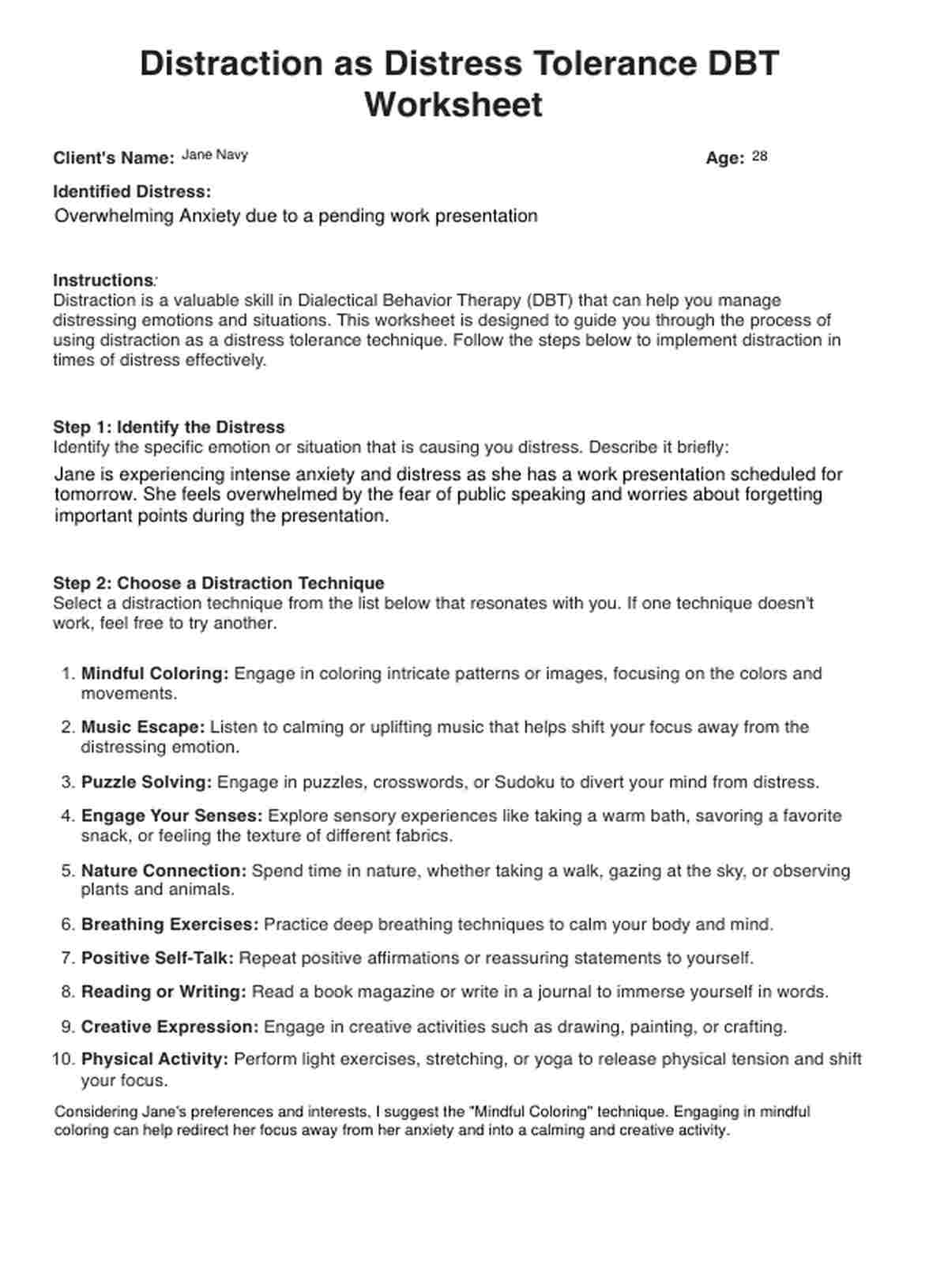

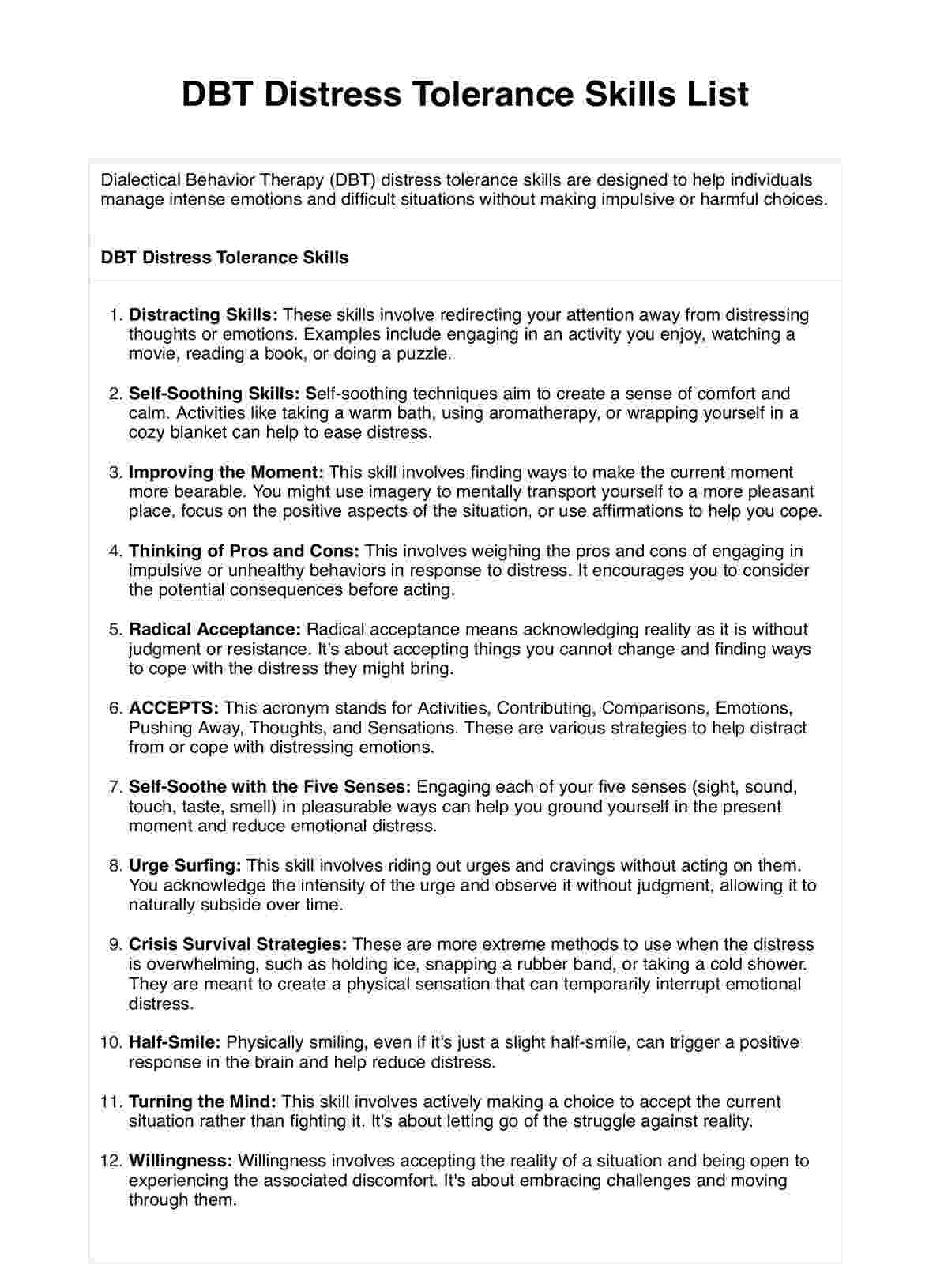
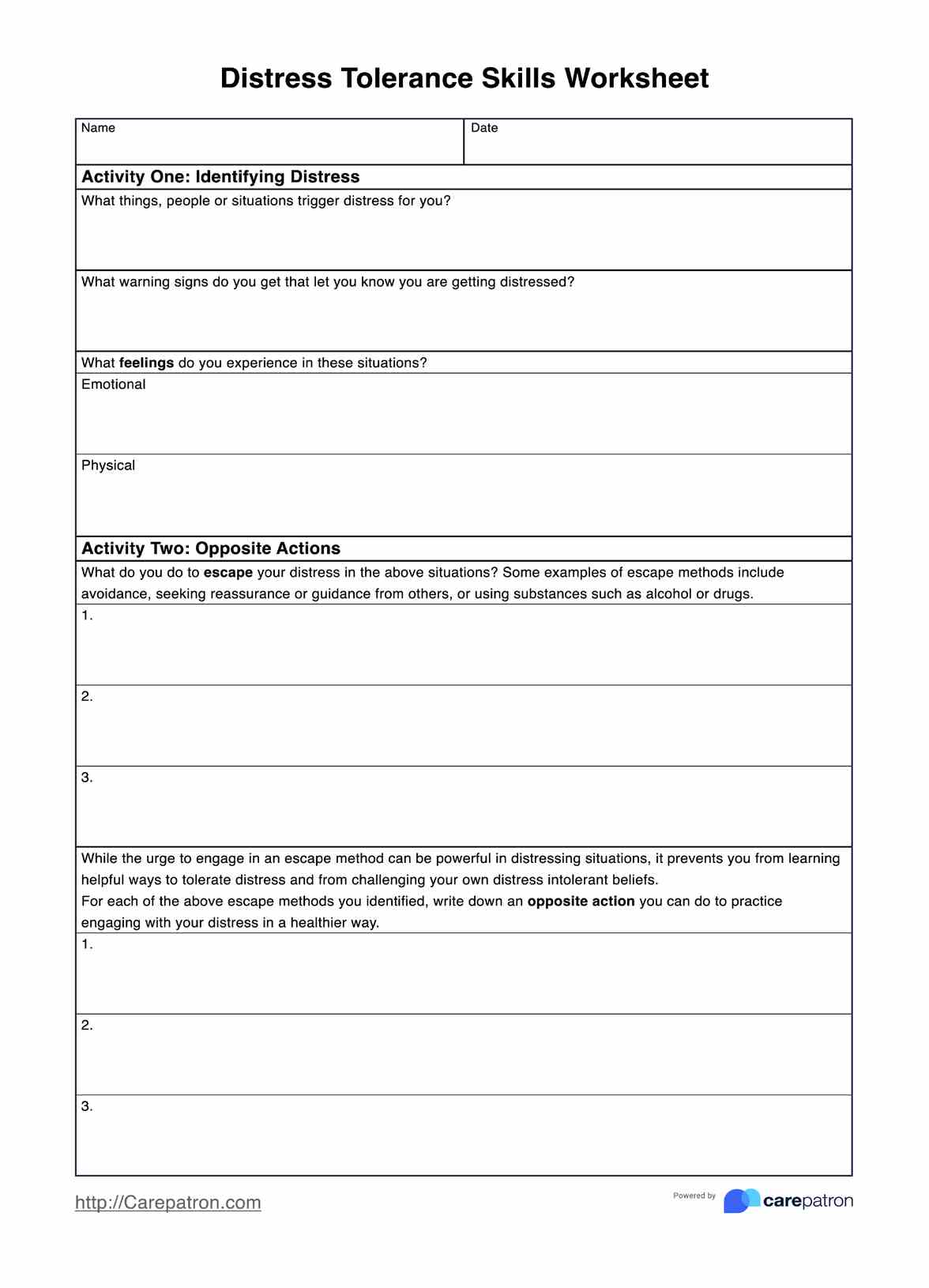














-template.jpg)




























































































